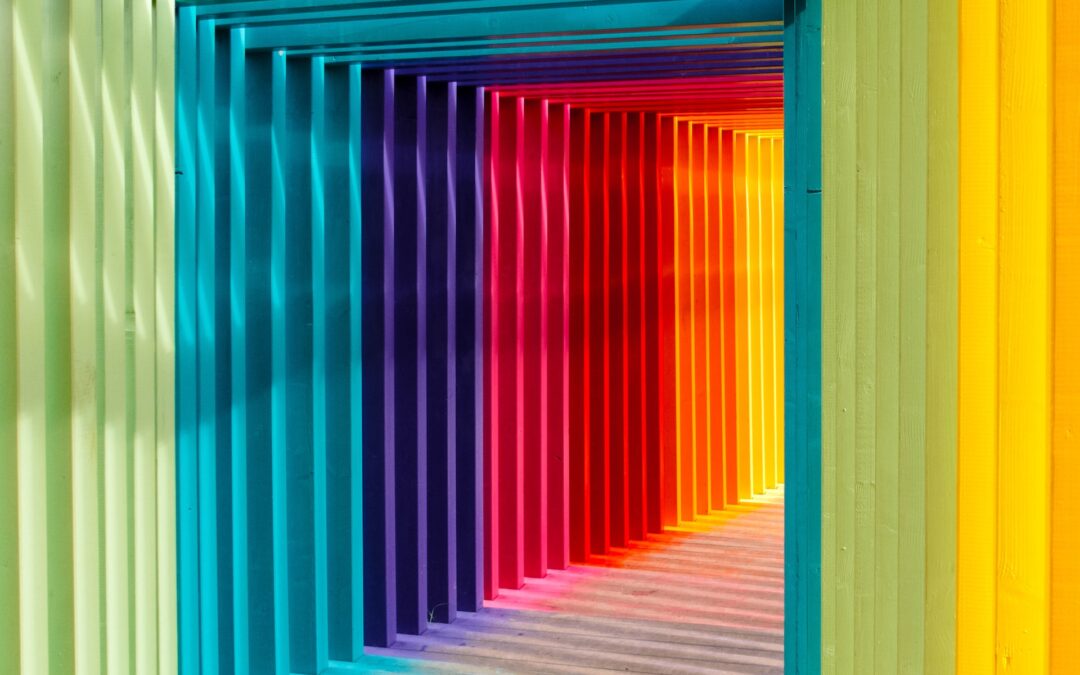In a world already full of acronyms and codes, who would have thought that something as simple as color could join in the confusion? Knowing the different color models and how they are used is not only helpful in getting the visual results you want it is critical to staying on budget.
Of the many color models available, there are really only three in which you need any fluency: CMYK, PMS and RGB.
CMYK Color
This acronym stands for cyan, magenta, yellow and black. CMYK is also known as process color, full color, 4 color, and 4c. The colors are versions of the primary colors, blue, red, yellow and black. They create full color images like you would see in a magazine. Choose CMYK when you need life-like, realistic color, more than two colors, have a large press run, or are printing only on your office printer.
What you need to know:
- If you are printing your project on a desktop color printer, look at the ink cartridge. If yours is CMYK, save your files and photos in that format for best output.
- Full color commercial printing is typically more expensive than one or two color. Typically, a press run of 1000 or more is needed to make this format economical.
PMS Color
The Pantone Matching System® (PMS) produces a specific color. It contains hundreds of colors, light to dark, bright to pastel; each designated by a number. PMS colors are typically used in one and two color printing and are also called spot color or flat color.
The PMS model delivers reliable color whenever you print it. It is an excellent choice for giving the impact of color to low budget jobs, and maintaining consistent use of corporate colors.
What you need to know:
- Inkjet and color laser printers are not able to produce PMS colors accurately, however some colors work better than others.
- There is no accurate proofing system for PMS color. The closest match can be shown on a high quality digital proofing system, available from your printer. When choosing PMS colors, have your designer show you a swatch from a PMS book to approve the color choice.
- PMS colors can be “screened,” printed as a lighter value of the color, in effect creating many colors from a single ink with no extra cost.
RGB Color
RGB stands for red, green and blue and makes up onscreen color. The RGB model is used for projects that will only be seen on a screen and not printed. RGB is the right choice for projects like websites, PowerPoint presentations and Acrobat .pdf files. Be advised that different monitors have different screen resolution and that can affect color display.
What you need to know:
- RGB produces vivid colors that look fabulous on-screen, but are difficult to reproduce in other color models. When converted to CMYK, many RGB colors look muddy and dull, and many have no Pantone equivalent at all. If your project will ever be used offline, be sure to select colors in the printing method it will be used in the most.
Color Matching
Have you ever wondered why the proof you are emailed looks different from the color mock-up from your designer, and different still from the printed piece?
What you need to know:
- Forget about this. Nothing ever matches exactly. The PMS or process color swatch book is the closest representation of the color you will get on press.
- Learn to think of your proofs as an approximation, and clearly explain to your designer what you are looking for. Trust your creative team to get the best match possible.
- If you must see exactly what a color will look like “final” you’ll need to display it on the monitor it will be shown, print to the desktop printer you will use, or order a sample printing of the PMS color you want. For process printing, you should be present during printing to approve the final output.
When using color, choosing the wrong format for your project can produce unexpected or unusable results, costing you both in lost time and money. Mastering the terms that specify color will provide valuable savings in every way.

Recent Comments